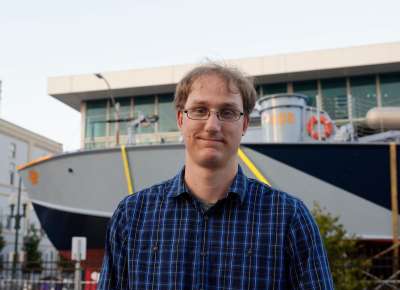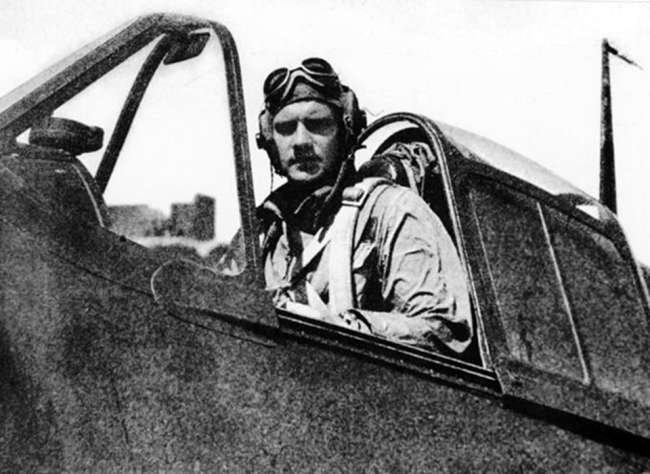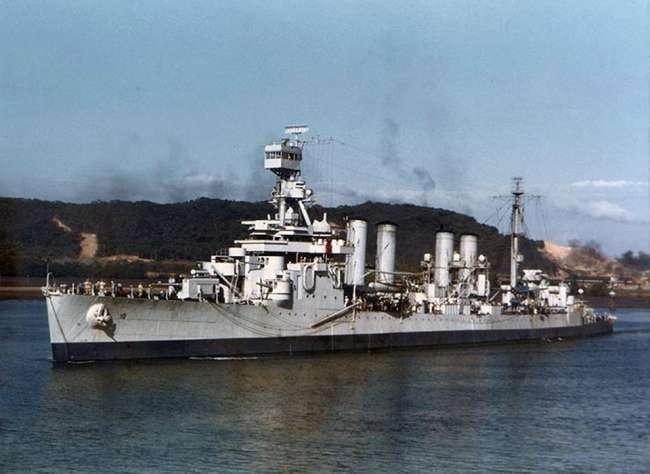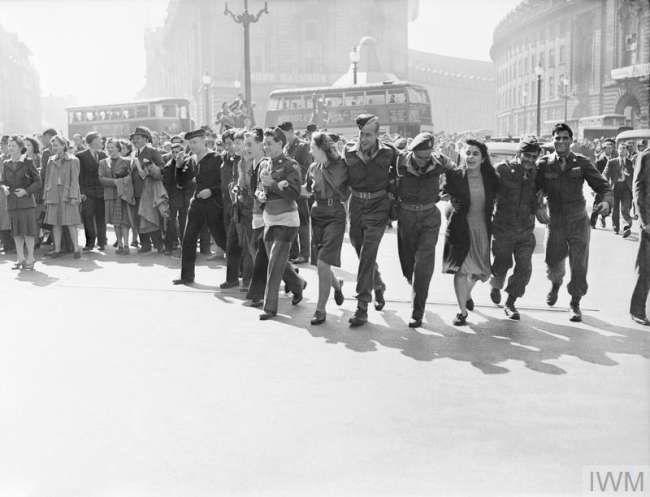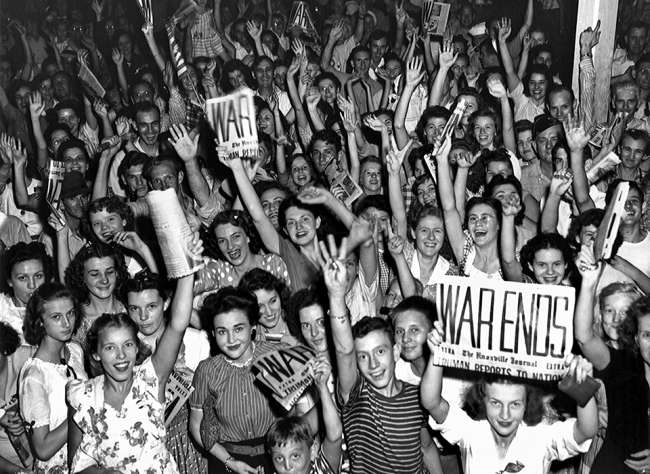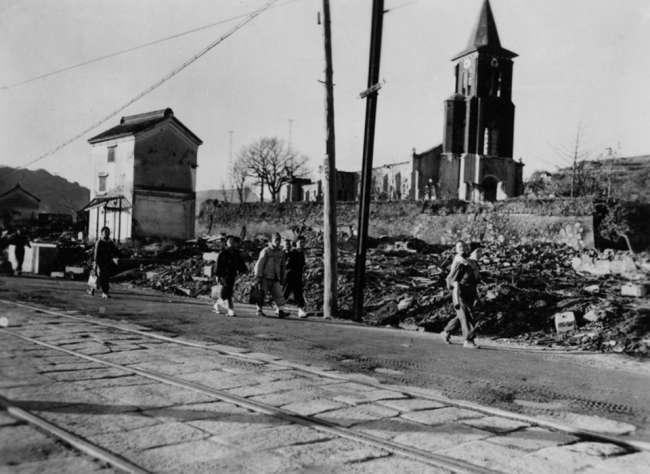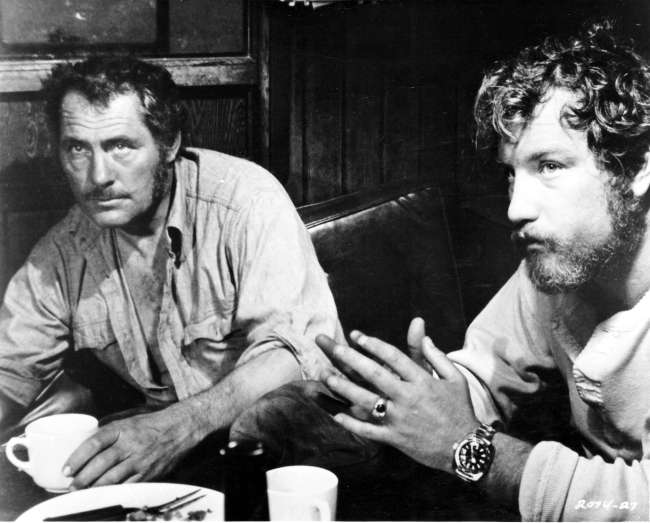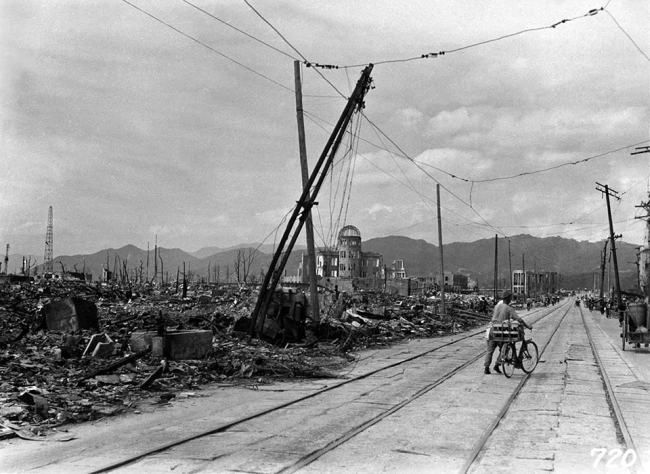On October 24, 1944, the thin trip wire that would spring a trap set by Rear Admiral Jesse Oldendorf in Surigao Strait was in place. Thirteen, three-boat sections of Patrol Torpedo (PT) boats were waiting to greet the two battleships, one cruiser, and four destroyers of Japanese Vice Admiral Shōji Nishimura’s Force C. Intending to penetrate Surigao Strait and destroy the invasion transports sitting in Leyte Gulf, Nishimura had little idea of the number of PT boats waiting for him and had no idea of the overwhelming force of battleships, cruisers and destroyers that blocked the exit. Sitting in the middle of Surigao Strait aboard PT-493, in between these two great battleship forces, was a horticulturist with a master’s degree from the University of Ohio.
Born on January 17, 1915, in the tiny town of Rugby, North Dakota, Richard A. Hamilton seemed to be on track to live a normal academic life. After graduating high school, he attended North Dakota State University, graduating with a B.S. in horticulture in 1937. He then moved to Columbus, Ohio, to attend a master’s program at the University of Ohio, graduating in 1940. Within weeks, Hamilton was working for a company based in Washington, DC, managing a department of 15 that collected and analyzed statistical data for the United States Department of Agriculture. Hamilton appeared to have his life on track until the Japanese attacked Pearl Harbor on December 7, 1941. Ten months after the American entry into World War II, Hamilton left his safe job for a commission in the United States Navy.
The beginning of Hamilton’s naval career was very similar to his civilian life, moving at a predictable and non-exciting pace. He attended the required training schools and was assigned as the assistant gunnery officer aboard the USS Bulmer (DD-222). When Hamilton boarded the Bulmer in November 1942, the ship was already a veteran of early battles in the Pacific theater. An obsolete class of destroyer designed for use in World War I, the ship had reached the end of her front-line use and was relegated to convoy duty between San Francisco and Pearl Harbor for the remainder of the war. Hamilton served this mundane duty for nine months before he was granted a transfer to a new command that came to define the rest of his naval career—Patrol Torpedo boats.
Hamilton passed the required interview and was accepted into the Motor Torpedo Boats Squadrons Training Center, Melville, Rhode Island, in August, 1943. There he found a service that had the excitement he was looking for. After completing training, Hamilton was assigned as a boat executive officer in Motor Torpedo Boat Squadron 33 (MTBRon 33) and deployed to the Pacific. In July, 1944, Squadron 33 joined veteran and new squadrons along the coast of New Guinea. In a few short months of action, Hamilton earned a reputation for his aggressiveness that ended up costing him his place on one of the Squadron 33 boats. Orphaned from a boat, Hamilton, and the rest of Squadron 33 departed the coast of New Guinea in October 1944 for the invasion beaches at Leyte Gulf. On October 21, 1944, 45 PT arrived in Leyte Gulf and immediately began patrolling.
Wanting to be in the action but without a command position, Hamilton volunteered as the third officer aboard Richard W. Brown’s PT-493. This fateful decision ended up putting Hamilton in the middle of Surigao Strait as Vice Admiral Shōji Nishimura’s ships bore down with ill intent.
Section 9, consisting of PTs 490, 491, and 493 took station in the middle of the southern entrance to Surigao Strait late in the evening of October 24, 1944. After picking up targets on radar the three boat section reported their sighting and began to close with the contacts shortly after 0130, approaching the Japanese destroyers Michishio and Asagumo from ahead. At 0200, the destroyers detected the coordinated attack of Section 9 just as the boats were launching their torpedoes from less than 1,000 yards. Between the three boats of Section 9, they were able to launch nine torpedoes at the Japanese destroyers, making the most concentrated PT torpedo attack of the night.
Unfortunately, no hits were recorded, but the formation of destroyers was forced to make a series of evasive maneuvers to avoid the attack. The disruptive attack made by Section 9 came at a high price to the PTs. Closing to within 400 yards of the alerted Japanese destroyers, PT-490 was caught in a searchlight beam and immediately hit with two shells that punched a hole in the hull. PT-491, under heavy fire, was not able to approach any closer after firing two torpedoes and retired under a smoke screen. PT-493, with Hamilton on board, made a sacrificial run between PT-490 and the destroyers to lay a smoke screen in an attempt to save the stricken PT. This sacrifice saved PT-490, but it cost PT-493 dearly when she was struck by three shells killing two sailors instantly, wounding all of the officers, and punching a hole in the engine room. Out of the fight, PT-493 desperately made a 20 minute run in sinking condition to the shores of Panaon Island. Piloted by the seriously wounded Executive Officer Robert E. Carter, PT-493 beached with a hard bump and began settling by the stern. The able-bodied sailors began to get the wounded to the beach and then transferred to the waiting PT-491. Despite suffering a facial wound, Hamilton swam back to the sinking PT-493 to destroy all of the confidential material and gear before he was brought back to base. For his actions during the battle of Surigao Strait, Hamilton received a Silver Star and Purple Heart.
Although wounded, the war was not over for Richard Hamilton. After a short leave and refresher course in the United States, Hamilton was reassigned to Motor Torpedo Boat Squadron 22, based in the Mediterranean Theater. Hamilton arrived in Golfe Juan, France, on April 11, 1945, and was given command of PT-305. His character and experiences in the Pacific theater immediately made him popular with the crew, so popular the crew changed the unofficial name of PT-305 from the “USS Sudden Jerk” to “Half-Hitch,” in honor of their new commander. In return for the praise, Hamilton was a fair captain and brought the aggressiveness that defined his career with Squadron 33 in the Pacific. By April 1945, the naval war in the Mediterranean was slowing down; however, there were still areas of enemy activity.

Crew members pose on the bow of the newly renamed PT-305. In the Pacific, Hamilton was known as “Dickey Dare.” In the Mediterranean he was given the nickname “Half-Hitch” due to his short stature. In honor of their new captain, the crew of PT-305 changed the name from “USS Sudden Jerk” to “Half-Hitch.”
On the night of April 23, 1945, PT-305 and PT-307 were ordered to patrol the mouth of the Arma River near the French-Italian border. It was suspected that a nest of Italian Torpedo boats, known as MAS boats, was operating against Allied shipping from the river. At 0005, radar contact was made with one enemy vessel two miles distant. The patrol commander, Lieutenant Nagle, aboard PT-307, ordered an immediate gunnery run on the enemy vessel. PT-307 and PT-305 increased speed, closing to 200 yards before opening fire. At 50 yards, PT-307 cut hard right to avoid a collision with the MAS boat, and Hamilton chose to cut to the left, pulling up alongside the MAS. For the next ten minutes PT-305 and the MAS raced through the night exchanging 40 mm, 20 mm, and .50-caliber fire until the MAS began to slowly pull away. As the MAS increased the range to 1,000 yards PT-307 regained its station in the lead and the combined fire from 305 and 307 caused the MAS to go dead in the water. Circling, PT-305 and PT-307 pumped 40 mm shells into the MAS until it exploded and sank. For his actions in positioning PT-305 and preventing the escape of the MAS boat, Hamilton was awarded the Croix de Guerre by France.
-

The crew of PT-305 posing on the bow in Golfe-Juan, France. Richard Hamilton is on the far left of the second row.
-

Richard A. Hamilton (left) and Charles R. Littig (Right) standing on the stern of PT-305 in Golfe-Juan, France.
The action on the night of April 23, 1945, was the final action for PT boats in the Mediterranean theater and the last fight for Richard Hamilton. After the war in Europe ended, Hamilton returned with Squadron 22 to the United States to refit for duty in the Pacific. The war ended while PT-305 was sitting in New York. Hamilton was detached from Squadron 22, and discharged from the US Navy in September. After leaving the Navy, Hamilton resumed his career, becoming a professor of horticulture at the University of Hawaii. In 1950, Hamilton received a PhD in Horticulture from the University of Minnesota and resumed teaching at the University of Hawaii. For the next four decades Hamilton traveled the world researching plant life, contributing to the success of crops around the world and in his new home of Hawaii.
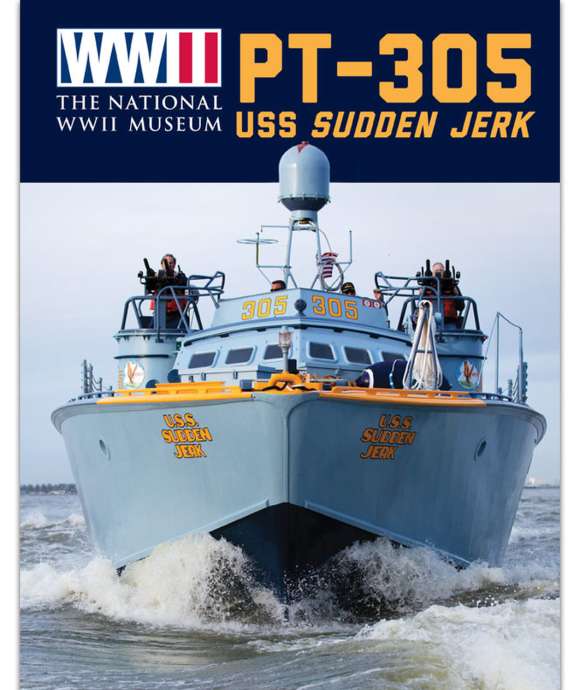
The National WWII Museum PT-305 Guide
In April 2007, accompanied by Museum curators, PT-305 found her way back to New Orleans, where The National WWII Museum became her home on land until she could be restored to her former glory. Learn more about the Museum's journey to restoration while supporting our education mission through a Museum Store purchase.
This article is part of an ongoing series commemorating the 75th anniversary of the end of World War II made possible by Bank of America.
Joshua Schick
Cite this article:
MLA Citation:
APA Citation:
Chicago Style Citation:

